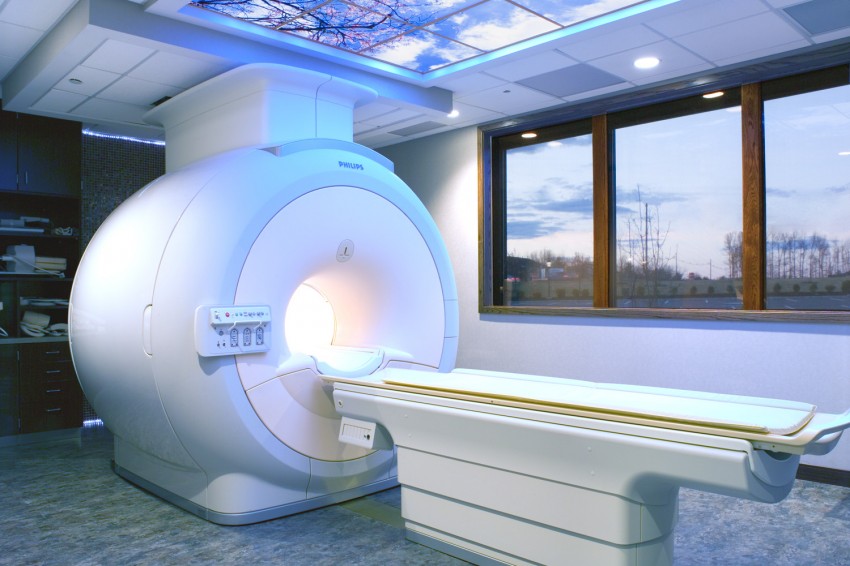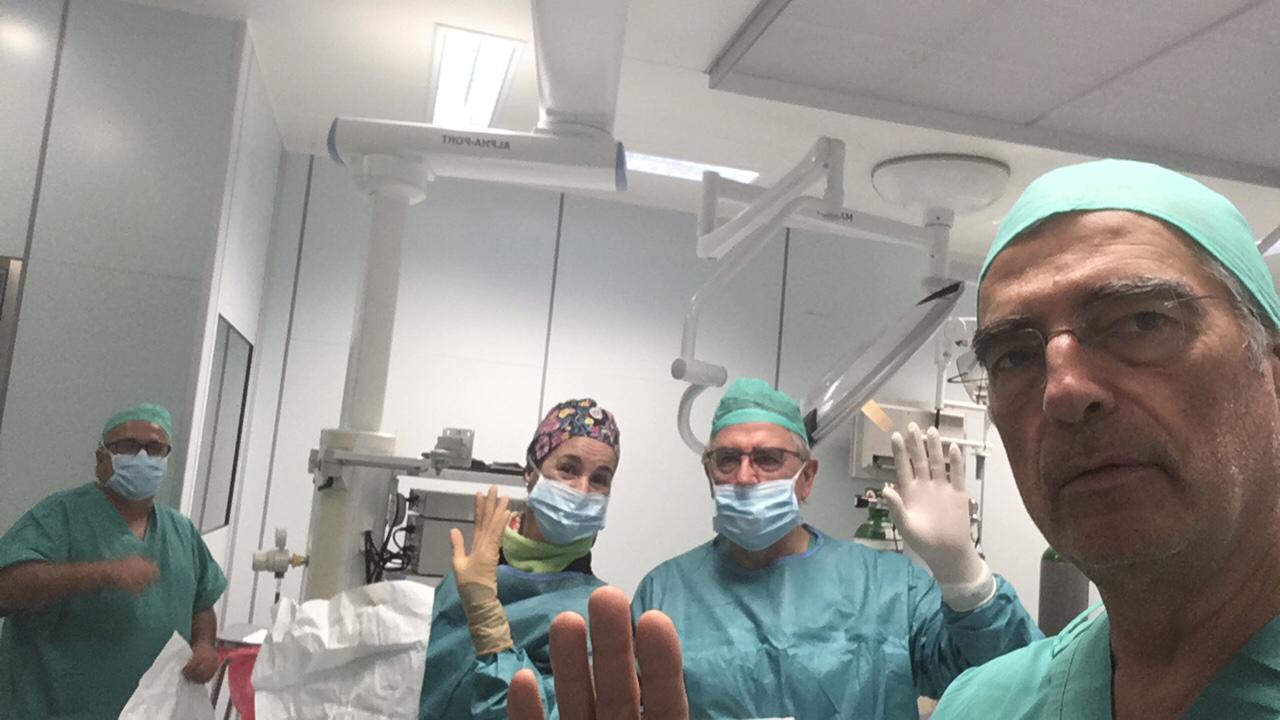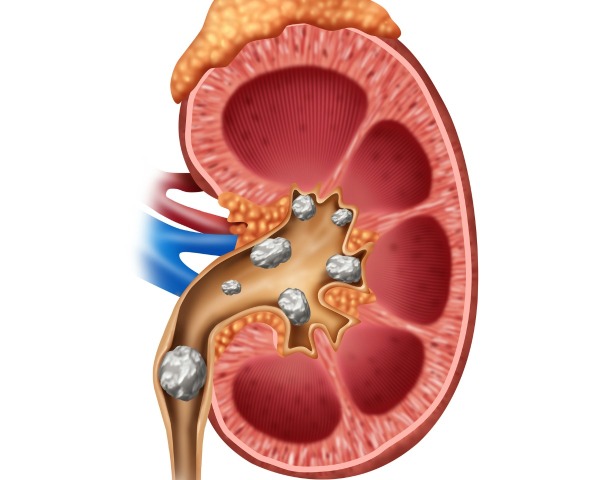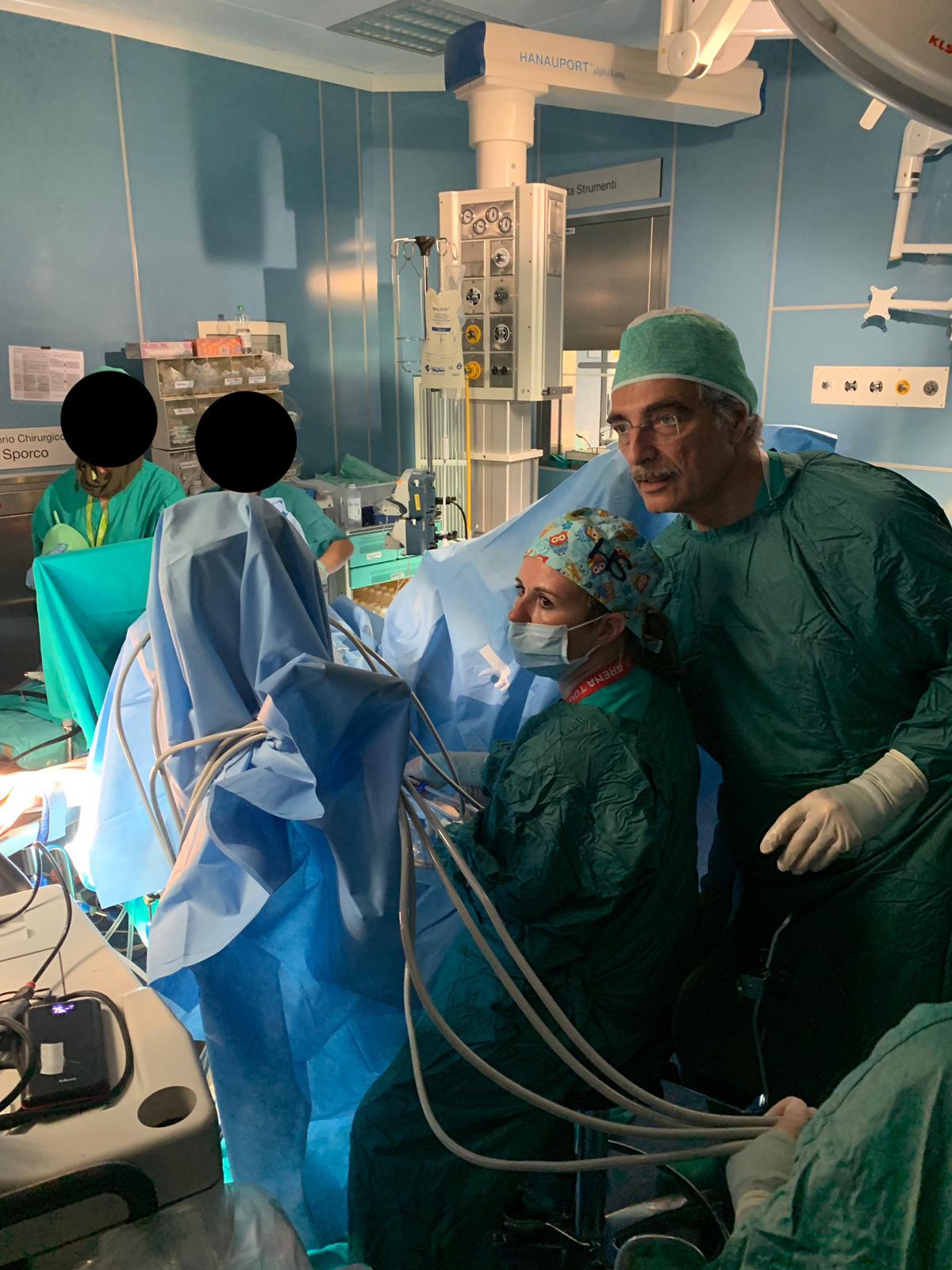News
Could a "manogram" replace a prostate biopsy?
In our centers in the Santa Elena Clinic in Malaga and Hippocrates DOO Nova Gorica and for the patients who come to Trieste in Via Fabio Severo 3, these criteria have been implemented for years. In fact, the simple prostatic examination combined with PSA transrectal ultrasound and biparametric MRI have been in use for many years. We have established a wonderful collaboration with prestigious international university and research centers that guarantee us the highest possible accuracy through the use of up-to-date 3 Tesla nuclear magnetic resonance technologies of the latest generation
Great work with Santa Elena Team in Malaga - Spain.
Prostate cancer in TZ in a large prostate: cryosurgery with bilateral preservation of nerves for total preservation of erections. Continence preserved. A couple of needles are inseryed also in the other side adenoma to improve urinary flow.
This interesting case offer the opportunity to treat with target ablation two problems: urinary disuria caused by Prostate enlargement and cancer in a single step while preserving potency and continence. Great work with Santa Elena team in Malaga Spain
The use of antibiotics and risk of kidney stones
Nephrolithiasis is a complex disease with multiple contributing factors, including the environment, lifestyle and genetic causes. The prevalence of nephrolithiasis has increased by 70% over the last three decades. Dietary changes, increased prevalence of overweight and metabolic syndrome and diabetes are often considered likely to be causal in this observed increase.
Although these and other variables are probably important, it has been suggested that the increasing use of antibiotics is also a contributing factor to the development of nephrolithiasis. The role of antibiotics could result from alterations in the intestinal microbiome of people receiving them for a variety of infectious diseases.
Recent results: studies on intestinal microbiome have focused on forms of oxalobacter, a gram negative anaerobic bacterium that frequently colonizes the human colon. As a degradator of faecal oxalate, its presence is associated with lower urinary oxalate, which would be protective against the formation of calcium oxalate stones ( it also appears to stimulate the secretion of oxalate of the colon.)
A recent study has shown that antibiotics can eliminate colonization with oxalobacter formigenes. Using the UK’s THIN (Health Improvement Network) database of children and adults, exposure to antibiotics has been shown to increase the likelihood of nephrolithiasis. The study included 25 981 patients with nephrolithiasis and 259 797 corresponding controls for age, sex and practice. Twelve classes of oral antibiotics were evaluated for a combination with nephrolithiasis. Exposure to five different classes of antibiotics (sulfas, cephalosporins, fluoroquinolones, nitrofurantoin / metenamine and broad-spectrum penicillins) 3-12 months prior to diagnosis of nephrolithiasis was associated with kidney stones. The magnitude of the association was the largest for those exposed at young ages and 3-6 months before being diagnosed with nephrolithiasis.
It is important to note that although the strengths of the associations diminished with time from exposure to antibiotics, a nephrolithiasis development association persisted for up to 5 years after receiving antibiotics from all classes, with the exception of broad-spectrum antibiotics.
Other effects on the microbiome are possible but not yet supported. Antibiotics are widely prescribed, with children receiving more antibiotics than other age groups, often for inappropriate reasons. There are already ample reasons to encourage antibiotic management, but the possible role of antibiotic exposure in contributing to the increasing prevalence of kidney stones in children and adults is another reason.
Vasectomy Increases Prostate Cancer Risk Over Time
This important article deals with the consequences of vasectomy.
Vasectomy is widely used to avoid pregnancies and is performed with a small outpatient procedure to bind sperm ducts.
The article is surprising for two reasons:
First of all, it seems to show that those who undergo vasectomy have 15% more diagnosed with prostate cancer, with an increased risk after 10 years.
The second observation is that vasectomics are generally healthier than the rest of the population.
So we can ask:
The subjects who undergo vasectomy are those who have a more active sex life because they are healthier?
Are vasectomy subjects healthier because they have more sex?
Do non-vasectomized subjects who are healthier have more sex?
Do non-vasectomized subjects who have more sex have a higher risk of prostate cancer?
Are vasectomized and non-vasectomized subjects healthier because they have more sex or vice versa?
Worse Prostate Cancer Outcomes With 5-Alpha-Reductase Inhibitors
This article is extremely interesting:
Reading it with ATTENTION you can deduce the following implied consequent deductions:
1. The use of 5 reductase alphas does not cause prostate cancer.
2. These drugs lower your PSA.
3. Screening for the early detection of prostate cancer based on PSA is useful and reduces mortality,on the contrary of what widespread and propagated in the last years.
4. It is essential to know all related factors and customize the PSA values on the individual patient. As already 30 years ago said my master Fred Lee, and as reiterates the friend Richard Ablin who found out PSA: the PSA is very important, but you have to know how to interpret CORRECTLY!
Visinting Professor in Lebanon
Doctor Lugnani visiting Professor to University Hospital Dieu de France Beyruth e University Hospital Rayak.
Images are also taken from Malaga International Cryoteam
Proctoring
Radiologia interventistica presso l'Università di Pisa, con la Dottoressa Laura Crocetti. Trattamento della recidiva locale dopo prostatectomia radicale e radioterapia. Casi impegnativi in cui qualsiasi altra opzione è esaurita.
Decision Aids for prostate-Cancer screening of Limited Value
Screening decisions can be more complex than treatment decisions, well-designed decision-making aid could help patients understand the risks and benefits
Patients should be able to participate in health decisions, decision-making aids have been developed to help patients make informed decisions on treatment and to improve knowledge if they so wish and for these reasons.
However, in screening, where informed choice is not a common practice, decision-making aids are controversial and their effect is currently unknown.
A Finnish team analyzed 19 randomised controlled studies that compared DA’s for prostate cancer screening with the usual therapy. They found out the DA’s are:
- Probably associated with the improvement of knowledge (evidence of low quality).
- Probably associated with a small decrease in decision conflict (evidence of moderate quality).
- Probably not associated with doctors and patients discussing prostate cancer screening (low quality evidence) or with men’s decision to undergo prostate cancer screening (low quality test).
Note that randomised and controlled studies of prostate cancer screening das compared to usual treatments are heterogeneous in DA content, design, delivery and results.
Looking to the future, it should include the possibility of continuous updating of new evidence and not only provide education for patients, but also promote a shared decision-making process in the doctor-patient meeting.
Cancro, la dieta è un fattore di rischio
Nel 2015 più di 80.000 casi di cancro negli adulti statunitensi sono stati associati a una dieta non ottimale. Per quanto riguarda le tipologie di tumore, il cancro del colon-retto ha mostrato il più alto numero e la più alta proporzione di casi correlati alla dieta (38,3%).







